Perhaps you’re fascinated with the engines that power a cruise ship, or perhaps you want to know which cabins to stay well away from, due to the noise and vibrations of the engine.
Whatever your reason for wanting to know, read on to find out where the cruise ship engines are and how much noise they make…
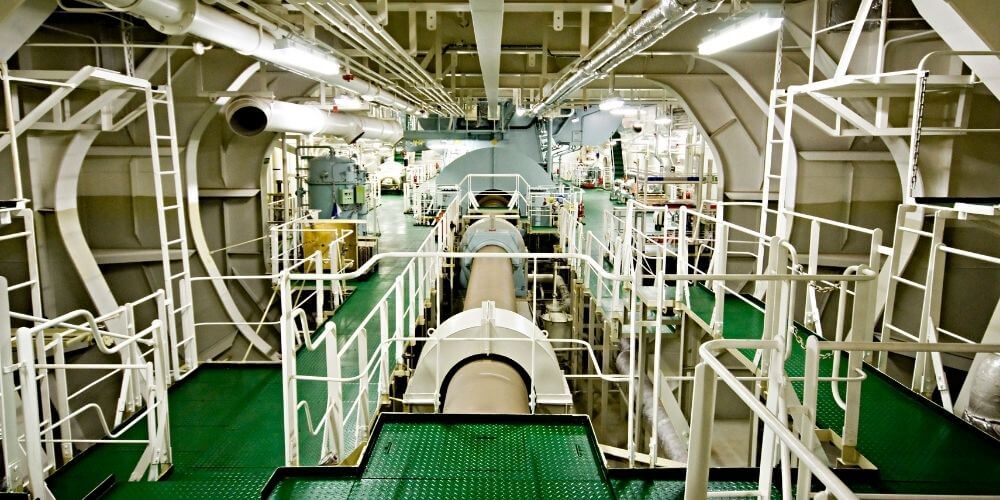
With a little help from a master mariner and ship’s pilot John, who has 47 years of experience in the marine industry, I’ll bring you the answers to your questions about cruise ship engines.
Where is the Engine on a Cruise Ship?
Most often, especially in newer cruise ships, the engines are located on the lower decks and towards the aft of the ship. They’re not all the way in the back, but they are in the mid-aft area.
Regardless of the size of the cruise ship, the engine in question is very, very loud. Fortunately, engineers can compensate for this by utilising sound reduction technology and designing the engine room of a cruise ship to be well-insulated.
The insulation serves two purposes: to keep out noise and to reduce the amount of heat- generated by a fully-operating engine – from escaping onto adjacent decks. This is of utmost importance on cruise ships, where the comfort of guests is the absolute priority.
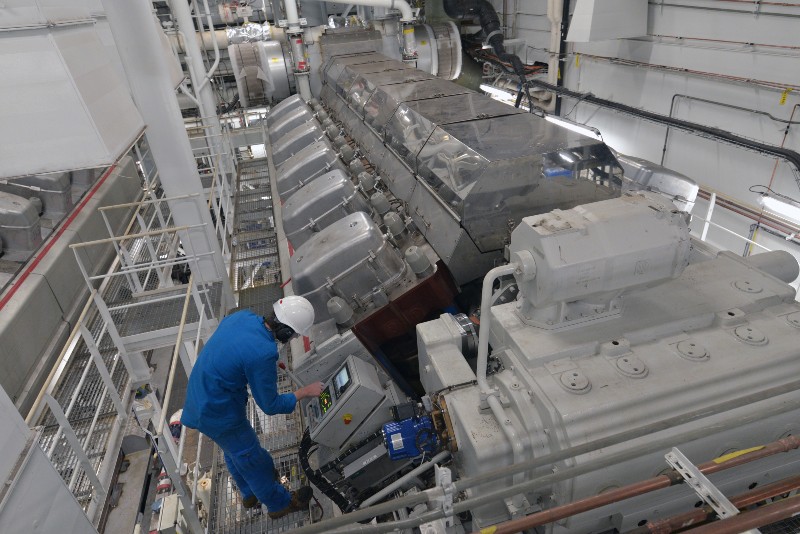
How Loud Are Cruise Ship Engines?
The standard cruise ship engine can have a decibel range that exceeds 173 decibels. This is frighteningly loud and well into the range in which hearing damage occurs quickly. However, thanks to insulation and other sound reduction technology, it’s not nearly that loud in practice.
If you were to place a cruise ship motor right out in the open and crank it up, you would get an ungodly level of noise. However, since we can’t really do that, we can only go off of how many decibels it puts out when under operation, in place, on a cruise ship.
If you are in the ship’s engine room as it is running, a cruise ship engine is still pretty loud. In fact, it’s loud enough that anyone working in the engine room is required to use hearing protection equipment, or it will damage their hearing.
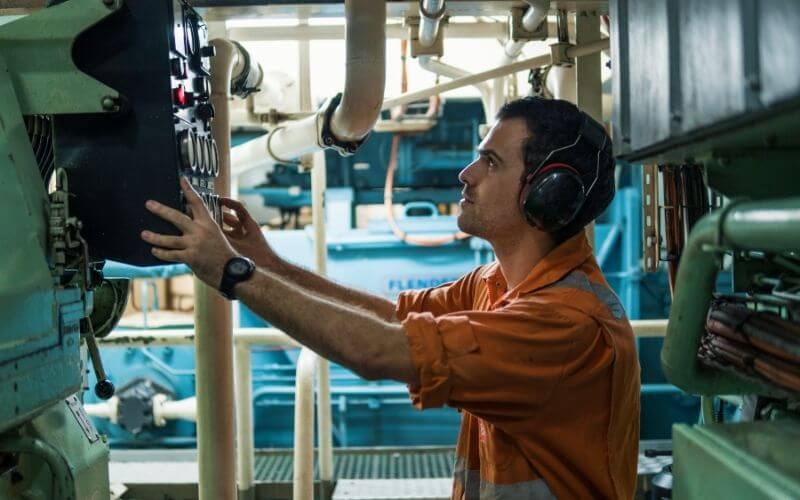
The point of all of this decibel talk is, despite the fact that adjacent cabins are well protected and the noise level is not damaging in any way, you’ll still be able to hear it through the floor and walls.
Cruise ship engines also create vibrations under operation and those vibrations are going to be felt within the immediate area, including adjacent cabins. You may find that the vibrations cause the coathangers in your wardrobe to rattle, which could disturb your sleep.
How Big is a Cruise Ship Engine?
Modern cruise ships don’t have just one engine. The biggest ships like Royal Caribbean’s Oasis-class ships have six engines and most other cruise ships have four.
Cruise ship engine rooms are very large, spanning several decks. They need enough space not just for the engines, but also for the generators, the fuel tanks, the control room and the engine workshop.
Take a look at this video of the engine room on Carnival’s Mardi Gras ship to see just how big and noisy it is…
What Happens to the Heat From a Cruise Ship’s Engine?
Waste heat from the cruise ship’s engines is extracted by a series of heat exchangers located on the exhaust path after the turbochargers en-route to the scrubber. Typically, exhaust gas is approx 350°C, but it’s cooled continuously by heat extraction to approx 30°C when it emerges from the funnel.
Ships engines are highly heat- and fuel-efficient. The recovered heat is typically used for a number of services, including fuel heating (if using heavy fuel oil) and the desalination of saltwater into freshwater by an evaporator plant. Fresh water is also produced by reverse osmosis to supplement the evaporator.
Read more: How Cruise Ships Get Fresh Water
Where is the Fuel Stored on a Cruise Ship?
On cruise ships, fuel is typically held in double-bottom tanks. These will be distributed over the length of the vessel along with ballast tanks. Generally, the only fuel tanks found in the engine room would be the settling and service tanks.
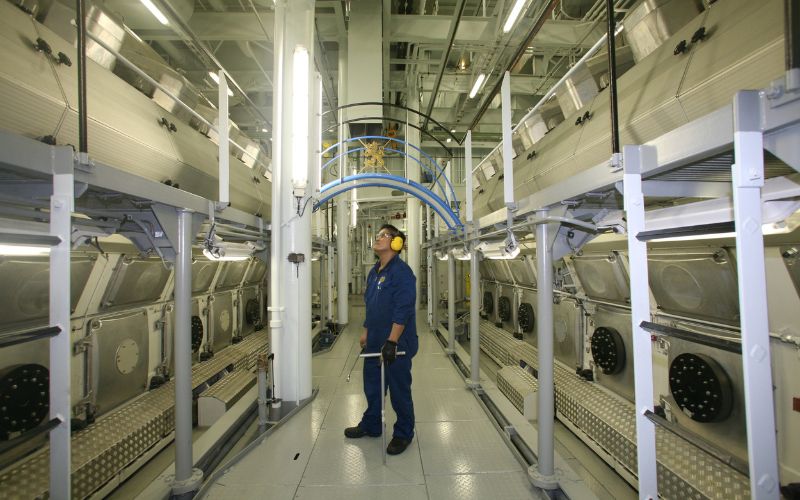
What are Cabins Near the Engine Room Like?
Your first thought would probably be to stay well away from any cabins near the engine room. There are several reasons for this, some of which go beyond just the noise an engine produces.
Cabins near the engine room may be:
- Smaller than average
- Without windows
- Exposed to vibrations, particularly when docking
- Exposed to engine noise
Small and cramped are the defining characteristics of a cabin near the engine room. Since the engine is located in the centre/aft of the ship and on the lower decks, these rooms are not priority rooms within the context of ship design.
Staying in one of these cabins means that you will likely be exposed to plenty of noise and vibrations from the engine. You’re also likely to experience noise from the crew as they go to and from work throughout the day and night.
Since you’ll be in the middle of the ship and on a lower deck, your cabin will be dark and windowless. For obvious reasons, rooms situated towards the centre of the ship arent’ afforded the luxury of windows, so if claustrophobia is an issue for you, stay away.
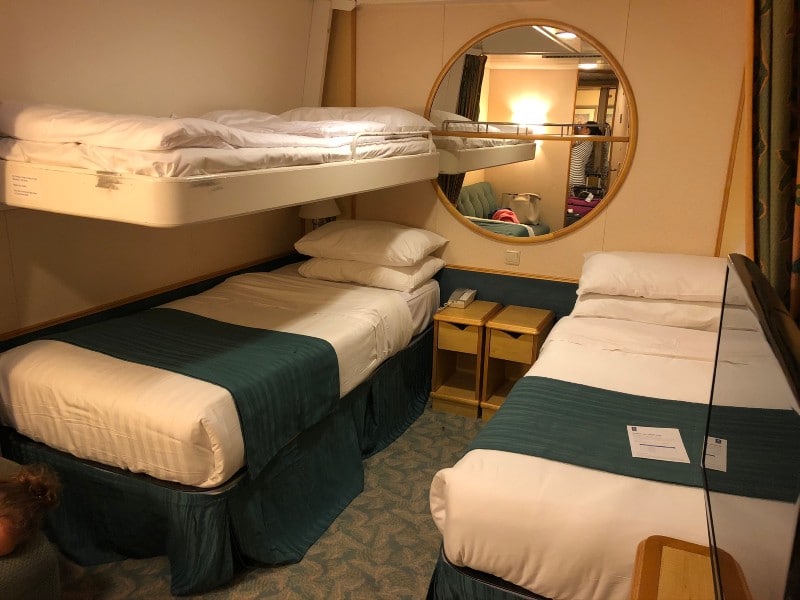
The Advantages of Getting a Cabin Near the Engine Room
Some people can sleep through absolutely anything. If a jet breaks the sound barrier right over their heads, they’ll go on snoozing with perhaps the briefest moment where they break out or REM sleep before plummeting right back down into the depths of unconsciousness.
Cabins near the engine room are viable candidates for people who can sleep through a hurricane. Since they are windowless, you never have to worry about ambient light once you flip the light switch off at night.
The argument can also be made that no one ever spends much time in their cabins on a cruise. It’s a good argument because who would want to sleep their way across the Gulf of Mexico?
It’s not as if cruise ships lack entertainment when out to sea. There are loads of things to do and staying in your cabin will probably be the absolute last thing on your mind for anything other than brief periods of sleep.
But really, the main reason to choose an inside cabin on the lower decks is that these are easily the cheapest room on a cruise ship. You’re going on a cruise for the experience, after all, not the nap time. So a cheap room that knocks 70% off the price of your holiday is well worth the sacrifice, in my opinion.
NEW DEALS JUST RELEASED!
Don’t miss these hot cruise offers…
Read more: Why I (Almost) Always Choose an Inside Cabin for a Family Cruise
There’s also a hidden advantage that those new to cruising probably never consider. You can purchase a cabin that’s near the engine room for an outstanding price, with the option to upgrade.
Now, this option to upgrade doesn’t always mean that if you decide to upgrade, you’ll fork over more money to upgrade your cabin. What it means is if a cabin that’s superior in quality and cost becomes vacant – such as a last-minute trip cancellation – you may be upgraded for free.
That’s right. You can target a cabin near the engine room and sign up to be upgraded in the case of last-minute cancellations and it won’t cost you a single dime. Although there are no guarantees, of course.
Suggested read: How To Upgrade Your Cruise Cabin After Purchase
The Engine Isn’t the Only Source of Noise on a Cruise Ship
Even if you choose to stay in one of the most expensive suites on the ship, this doesn’t guarantee that you’ll be able to rest undisturbed. There are plenty of other things that could keep you awake at night on a cruise ship.
For example, if you sail to Canada and New England, you may find that the fog is so dense that the ship must sound its foghorn all through the night! If your cabin is towards the bow, you may be awoken by the sound of the anchor being raised and lowered. Or, if your room is by the elevator, you may hear lots of other guests chatting as they stagger to bed in the early hours of the morning.
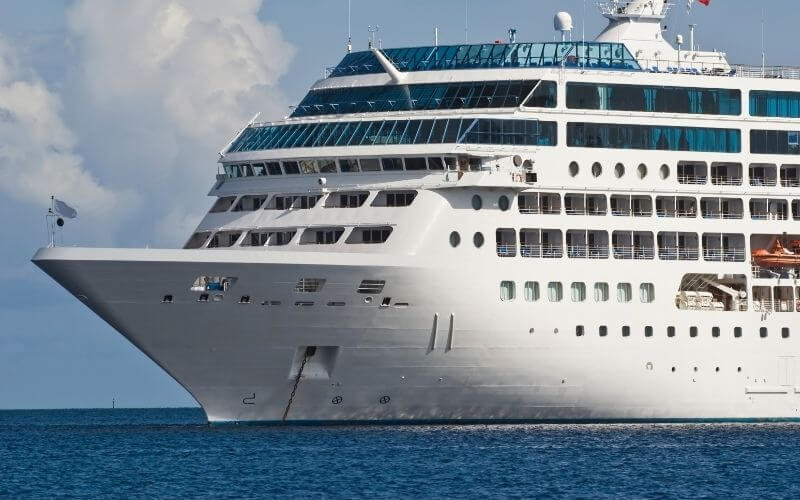
In this case, you may find that the gentle hum of the engine is actually helpful in drowning out some of the other sounds.
There are lots of other things you’ll want to think about as well, besides potential noise, when choosing a cabin. To help you to do just that, I’ve put together a handy checklist that you can refer to when it comes to booking your cruise…
The Bottom Line
If you’re looking for an outstanding cruise ship cabin that’s as quiet as possible, it’s important to know where the engine room is so that you can stay well away from it.
However – you also want to know where it’s at for the exact opposite reason, which is a cheap room with the potential for an incredible upgrade.

Jenni Fielding is the founder of Cruise Mummy. She has worked in the cruise industry since 2015 and has taken over 30 cruises. Now, she helps over 1 million people per month to plan their perfect cruise holidays.

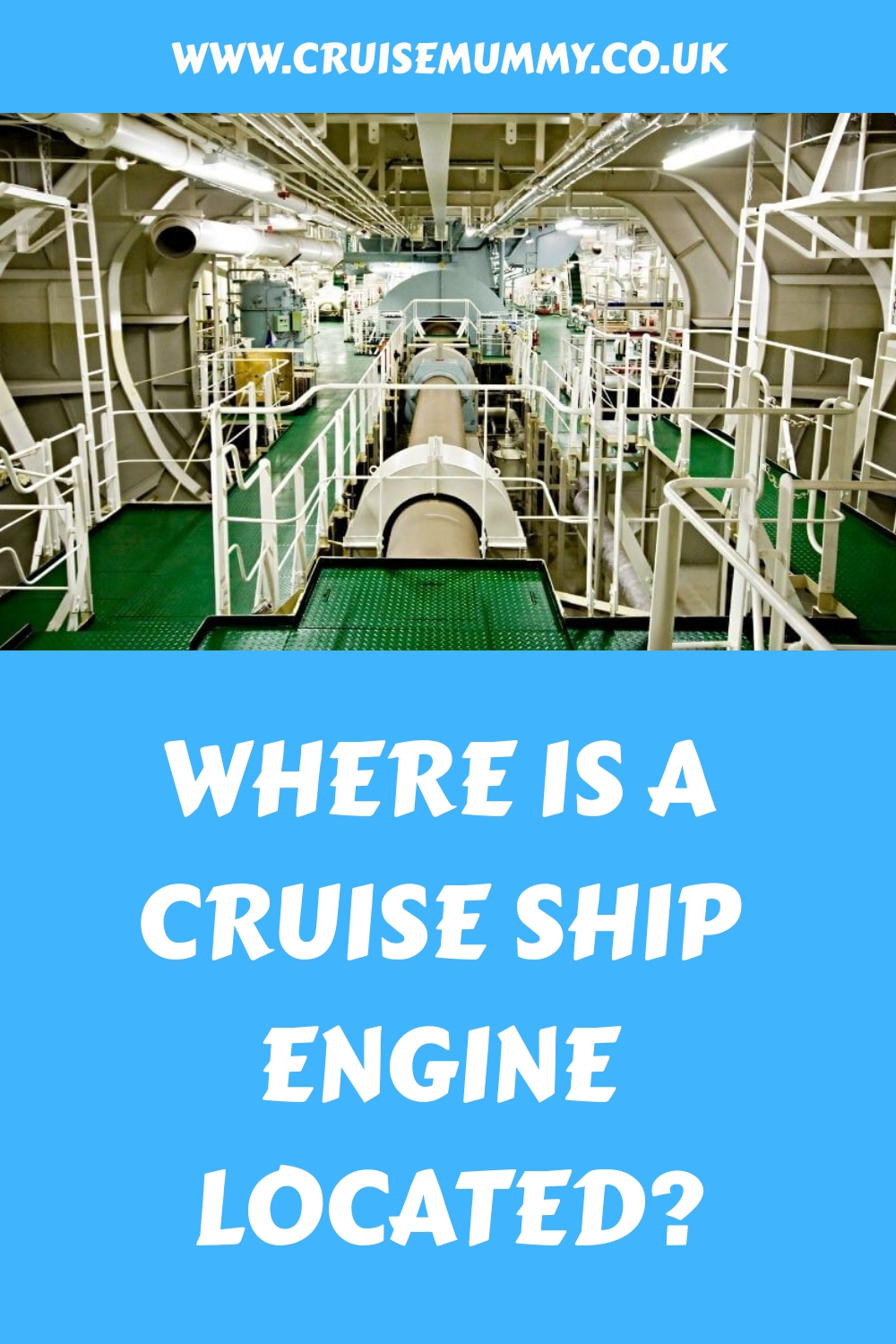

Hola Jenni,
Just wanted to point a couple of things to perhaps bring authenticity to you blogs.
Floors are decks, ceilings are deck heads and walls are bulkheads.
Write the two together if you think folk would understand the marine terminology.
Lastly, engines do not cause the vibration at the stern of the ship. Imagine if your car engine was creating vibrations you would immediately think something was wrong.
The vibration is cause by the propeller/s, the technical term is cavitation, but modern design has reduced this to a great extent.
Thanks for your help! 🙂